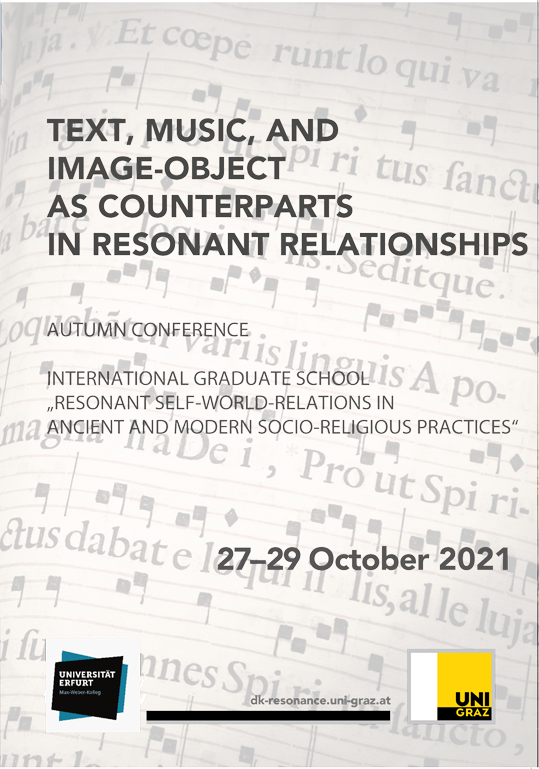Texts, music, and images can evoke reactions in people that place them in a special, resonant relationship with their environment, fellow human beings, objects, or practices. For Hartmut Rosa, art and its enjoyment are considered particularly powerful possibilities for resonant experiences. But what is the relationship between textual genre, literary language, style of music, sound, musical scores, paintings, vessels or sculptures and human beings? How do they cause or prevent resonance? Through what affordances, offers and strategies do they relate to humans? In the performing arts, in speech acts or rituals, performance plays a central role. But images, also, or musical works or (non-embodied) literature have a special performativity due to the act of perception and appropriation. The question therefore arises as to how these works of art repeatedly make it possible to combine new interpretations, readings, and stagings with the possibilities of resonant experiences.
The questions touch on the relationship between artifact or product (text, object, score, film, ritual prescription, etc.), which exists in a rather fixed form, and its reception, interpretation, and repetition. The effect on and experience of the receiving, producing, interpreting subject (practitioner response, reader response) are multiple, unpredictable, and transformative, and always remain subjective experience. Aspects of performativity of any kind of (artistic) expressions and their relation to the subject form the background of understanding, whereby a connection to 'resonance' as a relational concept is possible.
The contributions to this conference aim at finding methodological keys that enable us to derive a generally valid theory of resonant experiences from the individual perception of an iconography and its carrier, of leafing through a new edition of poems, of praying in a richly decorated church or of a memorable experience at an open-air concert.
The concepts of resonance, memory of resonant experiences (second- [or third-, fourth-...] order resonance), repetition, imagination, association, and contextualization will be applied to investigate structural and functional performativity in the reception and interpretation of art. Functional performativity focuses on what a text, ritual, image, or score is able to trigger in the receiving or acting subject; structural performativity asks how s/he achieves this. Through repetition (which can be understood as an almost endless sequence of reception events), ever new aspects of the ‘offers’ present or laid out in the artifacts can be brought to bear; citations in word, sound, or image as set pieces and (re)references to what is known, experienced, even effective, are another strategy that is applied to create something new - from rituals and imagery to literary texts.
A diachronic and transcultural perspective on these questions is to be guaranteed by topics from a broad methodological and disciplinary spectrum (music and literary studies, religious studies, theology, sociology, archaeology, history, and art history).
